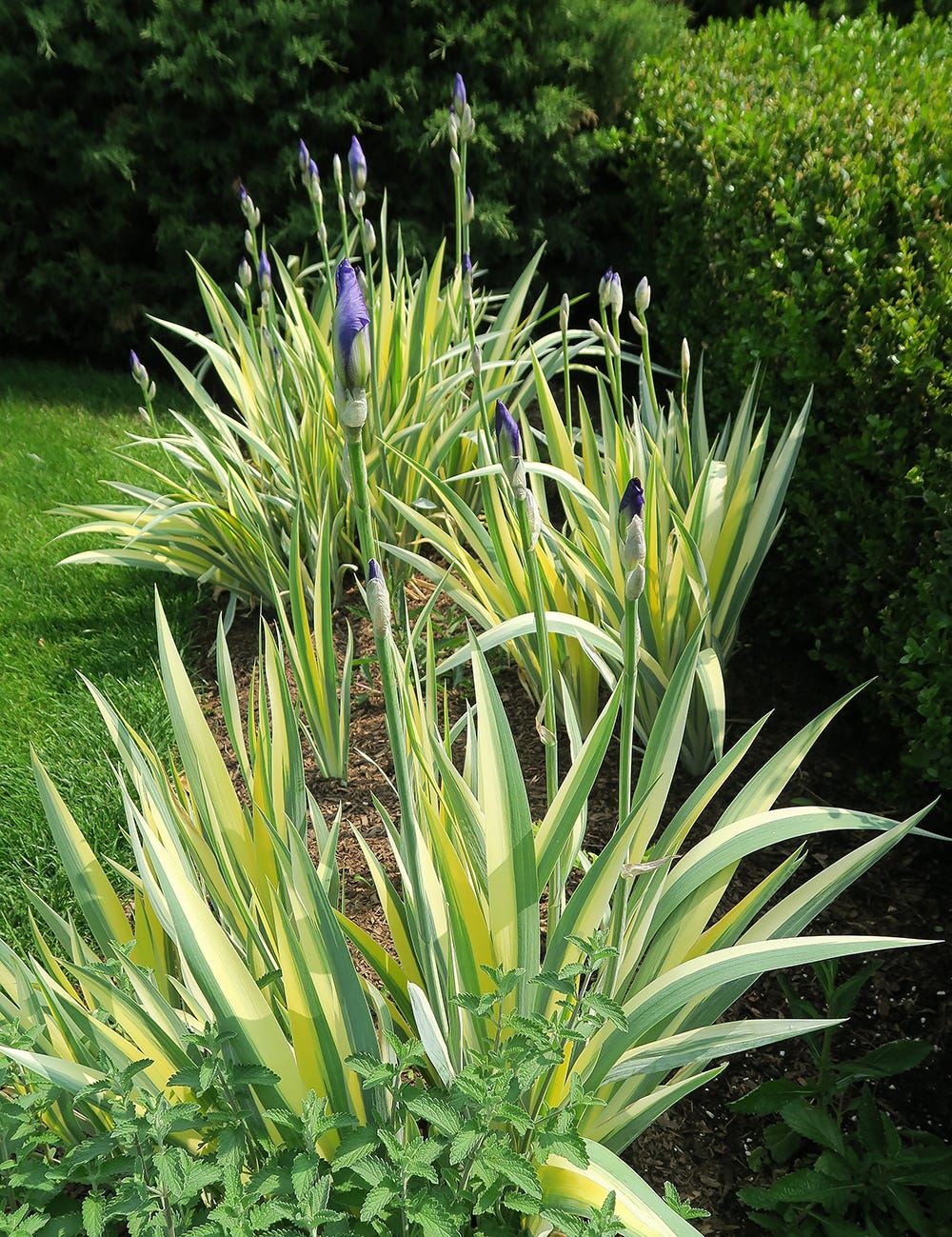
If you need a tough, drought-tolerant perennial with deliciously scented lavender-blue flowers and showy foliage, look no further than the gold variegated sweet iris (Iris pallida 'Aurea Variegata'). Winner of the RHS Award of Garden Merit. Attractive to butterflies and hummingbirds but ignored by deer and rabbits.
It has upright sword-shaped leaves with vertical bands in gray-green and creamy yellow. A real eye-catcher, even when not in bloom!
Iris pallida, also called Dalmatian iris, grows easily in well-drained soil with low to average fertility. It can grow in sun to part shade conditions. Divide it in late summer every third or fourth year to keep it blooming. Its bearded-type flowers appear in late spring to early summer atop scapes rising to 40 inches tall. The foliage is 32 to 36 inches tall. It is suitable for USDA hardiness zones 4– 9.

The vertical blades of Iris pallida blend well with other perennials. Since irises grow from underground rhizomes (they look like tubers), they can be tucked easily around other plants. Place them alongside plants that bloom later to keep the floral display going. These include dwarf black-eyed Susan, ‘Snowcap’ Shasta daisy, perennial geraniums, sedum, and yarrow.

Sweet iris also contrast beautifully with perennials such as Stachys ‘Hummelo,’ candytuft, and perennial blue salvia. It is especially eye-catching when planted near purple-leaved plants such as Heliopsis helianthoides var. scabra 'Burning Hearts' (False Sunflower).
Of course, you can pop in annuals such as spring pansies and summer blooming Angelonia and annual salvia to make it one glorious scene!

I think a plant bed of only Iris pallida would be striking. Try this in a minimal landscape for textural emphasis.
Interestingly, the rhizomes of Iris pallida are used to produce orris root, which provides a base note in Chanel No. 5 perfume. Orris oil is also added to some types of popular gin, including Bombay Sapphire.

Note: Gold variegated sweet iris is more vigorous than the white and green striped variegated Iris pallida. A winner for any landscape.





I love love this iris but found it didn't come back well. Has that ever been your experience? If so are there steps that can assist it to be more perennial?